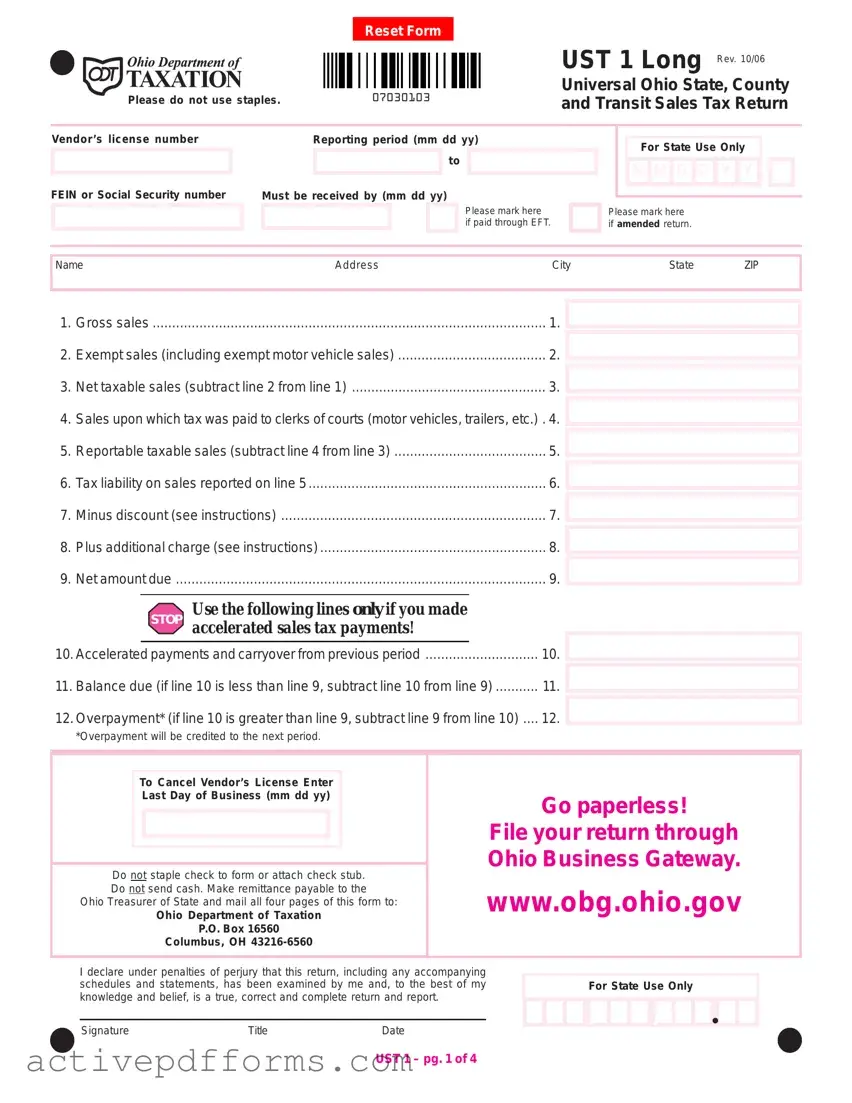The Ohio Sales Tax UST 1 form stands as a critical document for businesses operating within the state, encompassing a detailed process for the reporting and payment of state, county, and transit sales tax. This comprehensive form, revised in October 2006, requires vendors to furnish information including their license number, Federal Employer Identification Number (FEIN) or Social Security number, and the reporting period, which are essential for accurate tax reporting. It's designed to capture a wide range of sales data, from gross sales to net taxable sales, including specifics on exempt sales and adjustments like discounts or additional charges. Moreover, the form addresses peculiarities such as sales tax paid on motor vehicles to clerks of courts and advanced sales tax payments. With spaces dedicated to overpayment credits, amendments, and even cancelling a vendor's license, the UST 1 form is comprehensive. It also emphasizes the significance of accurate tax liability calculations on a county-by-county basis, underscoring the local impact of sales taxes. Notably, the form advocates for electronic filing through the Ohio Business Gateway as part of a push towards modern, paperless transactions, facilitating easier, quicker submissions and processing. The detailed instructions and structured format aim to guide vendors through the taxing yet crucial task of tax filing, making it an indispensable tool for businesses in maintaining compliance with Ohio's tax laws.


 M
M  D
D  D
D  Y
Y  Y
Y 



